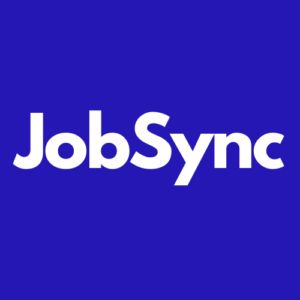
Your job posts are like billboards for your company. So what can you do to stand out?
When I was consulting HR Tech companies about social media strategies I always made the joke, “Why does Cookie Monster love web pages more than billboards? Because web pages have cookies!” It got the occasional laugh, and even with increasing regulation around the use of cookies, the sentiment is valid – organizations need to think about what they can do with their online presence.
The same is true when it comes to your job posts and online application process. Job posts don’t have to be basic templates that are stale and underwhelming. You’re trying to entice top talent to come and work for your company! You want them to want to join and wake up excited to come to work everyday. You want them to become advocates for your organization and be passionate about the work that they do and the mission your company is trying to achieve.
Get candidates excited to apply
Here are 4 simple steps to ensure that your job posts stand out and attract qualified applicants.
1. Don’t go overboard on bullet points.
Bullet points can help to significantly increase the readability of your job advertisement. But you have to use them in the right way. Highlight the what and the why. According to Three Ears Media CEO Kat Kibben,
“Knowing how to use something technically isn’t the same as proficiency or expertise.”
If you need help writing better bullets – instead of highlighting that they need 3 years of experience using a software indicate what they’ll use it for and why.
Here’s a very basic example:
You will use Google sheets to track the number of candidates that have applied to specific positions in order to track the effectiveness of our job posts.
The bullet point describes what they’ll use, why they’ll use, and the outcome that is expected of them. Telling someone they need experience using software won’t indicate how effective they’ll be in the role. Someone that has three years of experience in a role that uses Google sheets won’t translate into HOW they’ve used it. In fact, years of experience is rarely relevant. It’s typically a poor proxy for ability. Should a person who is proficient in Google sheets in six months be eliminated from consideration for masteringing ability quickly? In actuality, you may be MORE interested in them simply because their ability to learn and master is faster than expected.
2. Your job post needs to advertise
Fun fact: a job description is an internal HR document. It’s a document about what you need – it’s not what you want candidates to see when they apply to work for you. If you applied for a job and felt overwhelmed by the sheer number of words on a page – inundated with information that made you question if you even want to work at a company, you’re probably not going to apply.
The goal is to attract talent, not scare them away.
Now enter the lawyers. For many companies the job description has to have a legal stamp of approval. That process is painful, so companies don’t update them very often. So as the market changes and the data becomes more clear about what is effective, your business stays stagnant. So if you’re pulling info directly from your job description and putting that into your job post – it’s not always going to be relevant.
So what’s a company to do?
Start with a plan, a persona, and a clear goal.
Restructure your job posts to follow a point of view that answers the ‘what’s in it for me’ questions first. If the opening line of your jobs is your business boilerplate, then you are not answering the questions candidates want to hear. Build your job posts so that candidates want to hear more.
Tone second – read your job post. Are they conversational? Do they reflect your business style and approach? Do the words on the page accurately portray who you are as a company?
Persona third – who are you hiring? What skills do they need, and to accomplish what goals? Job posts should be more than a laundry list of tasks. Are you able to help the candidate understand the goal of the job without giving away proprietary information?
3. Logos are your friend [but NOT the ATS logo]
4.89% of candidates who click on your job post on Indeed (or any other job board) will make it to the completion of your job application. Spoiler alert – that’s bad. Said differently, 95% of them will bail. That’s ATS fatigue. ATSs are built from the ground up, with a key tenet – clean data. And how do you make sure you have clean data? Login screens.
Knock-knock. Who’s there (please use this very complicated login screen to tell us your name and email)? Silence. Bueller? Anyone? No?
The application process has been designed by engineers.
As the page (slowly) loads to ask for your Workday/SuccessFactors/Oracle login, many candidates simply walk away…. 70%+ of them.
Are they unqualified? Are they bad candidates? Do they not want the job ‘bad enough’? When compared to application processes that do not require this type of process, the candidates that bail are not unqualified, they are simply unwilling to give of their time and effort to create yet another login on yet another ATS.
There are over 200 different commercial ATSs in the US market, and millions of companies using them. Candidates are tired. They just don’t want your job bad enough when there are other ways to apply to jobs at other companies.
I know, I know, recruiters love/hate the alternatives. You love the volume of easy applies, but you don’t get enough information to actually screen candidates. Or worse, those aren’t applicants, and you need to find a way to get the candidate to still come back to your application on your website and complete it to stay compliant.
4. Use Integrated Native Apply
Whether you call it Native, Easy, Direct, or One click – keeping your applicants on ONE site during the process heavily increases your chances of getting them to submit an application. When people finally land on a job they’re interested in applying for, the last thing they want is to be re-routed to your career site, forced to create an account, and then upload their resume just to manually fill out the info AGAIN.
With a JobSync integration you can take advantage of a Native Apply solution while integrating your EEOC, compliance, and ATS level questions right into the application. No need to have your recruiters waste their time reaching out to confirm that information and no need to redirect them to an additional application to collect that info.
You can effectively and effortlessly screen your candidates right on the app. And guess what? We’ll send that info directly into your ATS so you don’t have to chase it down. It’s that simple. Candidates click apply, answer your ATS level questions, and then go straight to your recruiters.
Candidates are happy – no multiple logins, no repeat data points and no logins.
Recruiters are happy – 200% more candidates, knockout questions applied, quality stays high.
Compliance people are happy – no more tempting ‘leads’ that haven’t been presented with the key legal terms, EEOC or OFCCP required questions.
Leadership is happy. Hiring is faster. Job req counts go down. Days to hire are reduced.
Get started now, ask us how.


